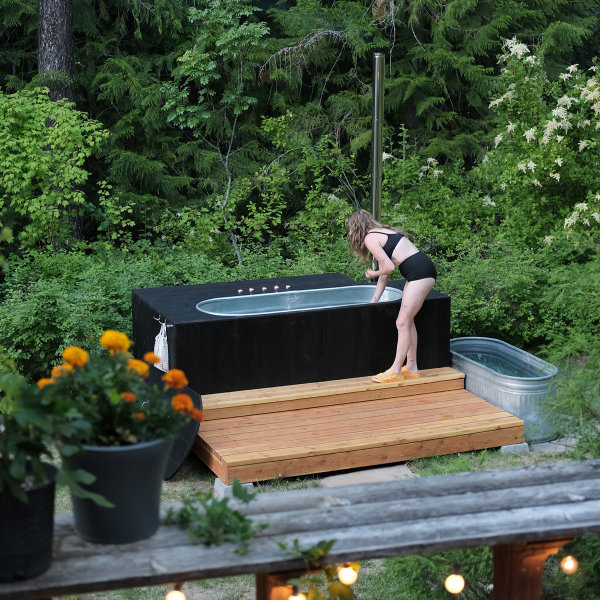A solar water heater diagram shows how the system works. The sun’s rays heat the water in the collector panel, and the heated water is stored in an insulated tank.
Understanding Solar Water Heaters
Importance And Benefits Of Solar Water Heating
Solar water heaters are becoming increasingly popular as a sustainable and cost-effective alternative to traditional water heaters. By harnessing the power of the sun, these systems are able to heat water efficiently and reduce reliance on fossil fuels. This not only helps reduce carbon emissions but also saves money on energy bills in the long run.
One of the key benefits of solar water heating is its environmental impact. By using renewable energy from the sun, these systems help reduce the carbon footprint associated with heating water. This is particularly important in the context of combating climate change and transitioning to a more sustainable future.
In addition to the environmental benefits, solar water heaters also offer financial advantages. While the initial investment may be higher compared to traditional water heaters, the long-term savings on energy costs can quickly offset the initial expenses. Homeowners can enjoy significant savings on their monthly utility bills, making solar water heating an attractive option in the long run.
Basic Components Of A Solar Water Heater System
A solar water heater system consists of several key components that work together to efficiently heat water using solar energy. Understanding these components is essential for the proper installation and functioning of the system. The basic components of a solar water heater system include:
- Solar Collector: This is the component that absorbs solar radiation and converts it into heat, which is then transferred to the water.
- Heat Transfer Fluid: The heat transfer fluid, typically a mixture of water and glycol, circulates through the solar collector and transfers the absorbed heat to the water.
- Storage Tank: The heated water is stored in a well-insulated tank to prevent heat loss. The storage tank usually has an inlet and outlet for hot water.
- Control System: The control system regulates the flow of the heat transfer fluid and manages the operation of the solar water heater system, ensuring optimal efficiency and performance.
- Backup Heater: In some systems, a backup heater, such as an electric or gas water heater, is included to provide hot water during periods of low solar radiation or increased demand.
These components work together to provide a sustainable and efficient solution for water heating. By harnessing the power of the sun, solar water heater systems can provide hot water even in remote locations with limited access to traditional energy sources.
Planning Your Solar Heater Setup
When it comes to setting up your solar water heater, proper planning is key to ensure efficient performance and maximum savings. This section will guide you through the important considerations when planning your solar heater setup.
Assessing Location And Solar Resource Availability
Before installing your solar water heater, it’s crucial to assess your location’s suitability and the availability of solar resources. Follow these steps to make an informed decision:
- Evaluate the position of your property in relation to the sun’s path throughout the day. Ideally, your solar water heater should be installed in a location where it can receive maximum sunlight exposure.
- Check for any potential obstructions such as tall buildings, trees, or shade that might block the sunlight from reaching your solar panels. Remember, unobstructed access to sunlight is vital for optimal heater performance.
- Consider the orientation and tilt of your solar panels. South-facing panels with an angle between 20 and 50 degrees generally offer the best performance in most regions.
Considering Local Climate Conditions
Understanding your local climate conditions will help you determine the most suitable type of solar water heater for your area. Here’s what you need to know:
- Assess the average temperature and solar radiation levels throughout the year. Regions with abundant sunshine and moderate temperatures are ideal for solar water heaters.
- Take into account the occurrence of extreme weather conditions such as heavy snowfall, hailstorms, or high winds. These factors may influence the durability and maintenance requirements of your solar water heater.
- Consult with local experts or installers who have experience working with solar water heaters in your specific climate. They can provide valuable insights and recommendations.
Selecting The Right Solar Water Heater Model
Choosing the appropriate solar water heater model is essential for optimal performance and energy efficiency. Follow these guidelines when making your selection:
- Determine your hot water usage requirements based on the number of occupants and daily activities that require hot water.
- Consider the storage capacity of the solar water heater. Larger households with higher hot water demand will benefit from larger storage tanks.
- Research and compare different solar water heater models, considering factors such as efficiency ratings, durability, warranty coverage, and user reviews.
- Ensure that the solar water heater model is compatible with your existing plumbing setup for a seamless installation process.
By carefully assessing your location and solar resource availability, considering local climate conditions, and selecting the most suitable solar water heater model, you can ensure an efficient and cost-effective setup. Next, we will explore the installation process of a solar water heater in detail.
Simple Solar Water Heater Diagram Unveiled
A solar water heater system is an innovative and eco-friendly way to harness the power of the sun to heat water. To better understand how this system works, let’s decode the simple solar water heater diagram and uncover its hidden components and functions.
When it comes to understanding a basic solar water heater schematic, it’s essential to interpret the different components and their roles in the system. By knowing how each part works together, you’ll gain a clear understanding of how the system functions efficiently.
Identifying Key Components And Their Functions
To fully comprehend the solar water heater diagram, it is imperative to identify the key components and understand their specific functions. Here is a breakdown of the essential parts:
| Component | Function |
|---|---|
| Solar Collector Panel | The solar collector panel is responsible for capturing the sun’s rays and converting them into heat energy. |
| Heat Absorber | The heat absorber, usually a black surface, absorbs the solar radiation and transfers the heat to the water flowing through it. |
| Water Tank | The water tank stores the heated water and prevents heat loss through proper insulation. |
| Pump | The pump circulates the water between the solar collector panel and the tank, ensuring a continuous flow for optimal heating. |
| Controller | The controller monitors and regulates the system’s temperature and controls the operation of the pump, ensuring efficient energy usage. |
| Expansion Tank | The expansion tank allows for changes in the volume of water due to temperature fluctuations, preventing potential damage to the system. |
- The solar collector panel captures the sun’s rays and converts them into heat energy.
- The heat absorber transfers the heat to the water flowing through it.
- The water tank stores the heated water and prevents heat loss through proper insulation.
- The pump circulates the water between the solar collector panel and the tank.
- The controller monitors and regulates the system’s temperature and controls the operation of the pump.
- The expansion tank allows for changes in the volume of water due to temperature fluctuations.
By understanding the functions of each component, you can ensure that your solar water heater system works optimally and efficiently.
Now that you have unveiled the simple solar water heater diagram and interpreted its key components, you have a solid understanding of how this innovative system operates. With this knowledge, you can make informed decisions and take steps towards leveraging the power of the sun to heat water in an environmentally friendly way.
Step-by-step Installation Guide
In this step-by-step installation guide, we will walk you through the process of installing a simple solar water heater system. By following these instructions, you’ll be able to harness the power of the sun to heat your water effectively and efficiently. Let’s get started!
Preparing For Installation – Tools And Safety
Before you begin the installation process, it’s important to gather all the necessary tools and ensure your safety. Here’s a list of tools you’ll need:
- Drill
- Wrenches
- Screwdriver
- Tape measure
- Level
- Heat-resistant gloves
- Safety goggles
Once you have all the tools ready, make sure to prioritize safety measures. Wear heat-resistant gloves and safety goggles to protect yourself from any potential hazards during the installation process.
Mounting And Securing Solar Collector Panels
The solar collector panels are an essential component of the solar water heater system. They are responsible for absorbing solar radiation and transferring the heat energy to the water. Here’s how to mount and secure the collector panels:
- Choose an ideal location on your roof that receives maximum sunlight throughout the day.
- Using a tape measure and level, mark the spots on your roof where the collector panels will be mounted.
- Attach mounting brackets to the marked spots using a drill and screws.
- Place the solar collector panels onto the mounting brackets and secure them with additional screws.
Ensuring proper mounting and securing of the solar collector panels will optimize their performance and ensure the maximum absorption of solar energy.
Plumbing Connections And Insulation Requirements
Once the solar collector panels are securely mounted, it’s time to make the plumbing connections and ensure proper insulation. Follow these steps:
- Connect the inlet and outlet pipes of the solar collector panels to the water storage tank using wrenches and appropriate connectors.
- Ensure that all connections are tight and leak-proof to prevent any loss of heated water.
- After making the plumbing connections, it’s crucial to insulate the pipes and the water storage tank to minimize heat loss.
- Wrap the pipes and tank with insulation material, such as foam sleeves or thermal tape, to maintain the heat transfer efficiency.
Proper insulation will help retain the heat energy in the water, resulting in significant energy savings and a consistent supply of hot water.
By following this step-by-step installation guide, you can successfully install a simple solar water heater system. Remember to gather all the necessary tools, prioritize safety, mount and secure the solar collector panels correctly, and make the plumbing connections while ensuring proper insulation. Enjoy the benefits of eco-friendly and cost-effective hot water with a solar water heater!
Optimizing Solar Water Heater Performance
To ensure that your solar water heater operates at its full potential, it is important to optimize its performance through regular maintenance, troubleshooting common issues, and enhancing the system with smart technology upgrades.
Regular Maintenance Steps For Efficiency
Maintaining your solar water heater system is crucial for its efficiency and longevity. Here are some regular maintenance steps to follow:
- Check the collector for any obstructions that may hinder sunlight absorption.
- Inspect the piping system for leaks and ensure proper insulation.
- Clean the collector surface regularly to remove dust and debris.
- Monitor the temperature and pressure gauges to ensure they are within the recommended range.
- Flush the system periodically to remove any mineral deposits that can affect performance.
Troubleshooting Common Issues
Even with regular maintenance, solar water heater systems can sometimes encounter issues. Here are some common problems and their solutions:
- If the water temperature is not reaching the desired level, check the circulation pump for proper operation.
- If there is no hot water despite sufficient sunlight, inspect the controller and sensors for any faults.
- If there are leaks in the system, identify the source and repair it promptly to prevent further damage.
- If the water is not flowing properly, ensure that the valves and pipes are not clogged or blocked.
- If the system is not functioning at all, check the power supply, wiring connections, and fuses for any issues.
Enhancing System With Smart Technology Upgrades
Take your solar water heater system to the next level by integrating smart technology upgrades. These upgrades can help optimize performance and enhance user experience. Consider the following:
- Install temperature and pressure sensors connected to a smart controller for real-time monitoring and adjustments.
- Add a data logging feature to track system performance and identify areas for improvement.
- Integrate a smart thermostat to regulate water temperature according to your preferences and weather conditions.
- Utilize remote access and control capabilities to manage your system conveniently from anywhere.
- Explore options for integrating your solar water heater system with a smart home automation system.
By implementing these smart technology upgrades, you can optimize your solar water heater’s performance and make the most of its energy-saving benefits.

Credit: www.fieldmag.com
Frequently Asked Questions For Simple Solar Water Heater Diagram
How Does A Solar Water Heater Work Step By Step?
A solar water heater works step by step in the following way: The sun’s rays hit the collector panel, which has a black absorbing surface. The absorber transfers heat energy to water flowing through it. The heated water is then collected in an insulated tank to prevent heat loss.
How Do You Make A Simple Solar Water Heater?
To make a simple solar water heater, you will need an electric water heater tank (in good shape), black paint, a plywood box (big enough to hold the tank), sheets of glass, a hinged lid for the box (to reduce nighttime cooling), insulation material, pipes/fittings, and mountings (for the roof, side of the house, or ground level).
How Many Solar Panels Are Needed To Run A Hot Water Heater?
You will need 3 solar panels to run a hot water heater. Solar panels collect the energy from the sun’s rays and convert it into electricity to power the hot water heater.
What Is The Structure Of A Household Solar Water Heater?
A household solar water heater is structured with an absorber plate coated with an absorbent coating on its sun-facing surface. It also includes a grid of metallic tubes and sheets, with water flowing through the tubes. The sheet absorbs solar radiation and transfers it to the water.
Conclusion
To sum up, a simple solar water heater diagram outlines the functioning of a solar water heating system. The collector panel absorbs the sun’s rays, transferring heat energy to water flowing through it. The heated water is collected in an insulated tank to prevent heat loss.
This eco-friendly technology harnesses the power of the sun to provide a sustainable and cost-effective solution for hot water needs. Implementing a solar water heater can not only reduce energy bills but also contribute to a greener future.

I am a Water Heater specialist writer and blogger based in the USA & UK. I have been working with Water Heater for six long years. And I give trips on various Water Heater problems and solutions. I have a lot of experience with Water Heater And I share them here

